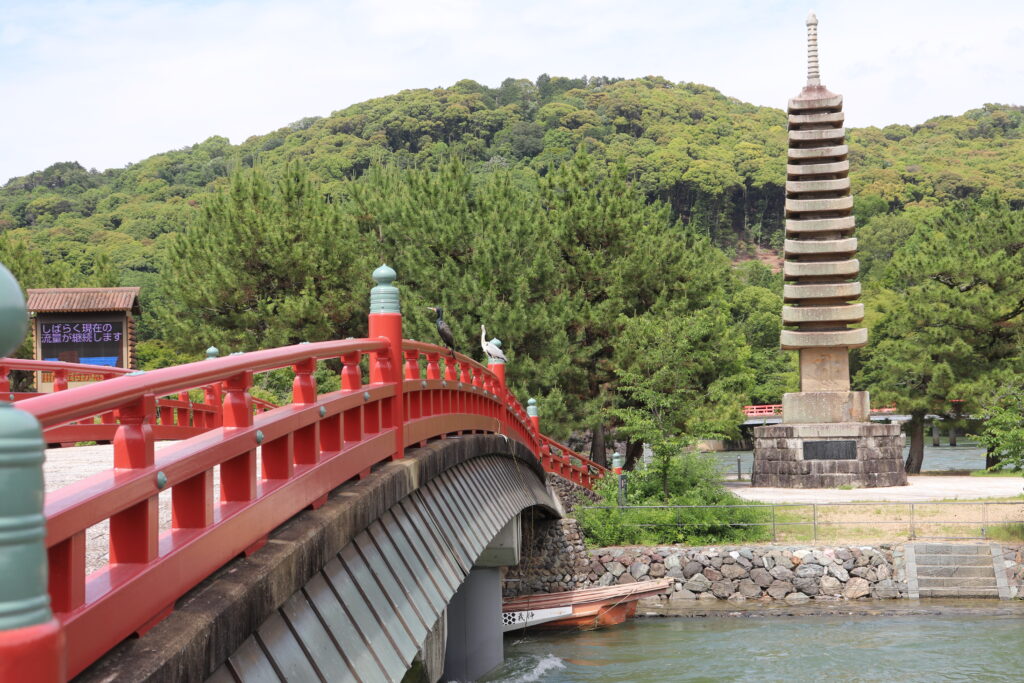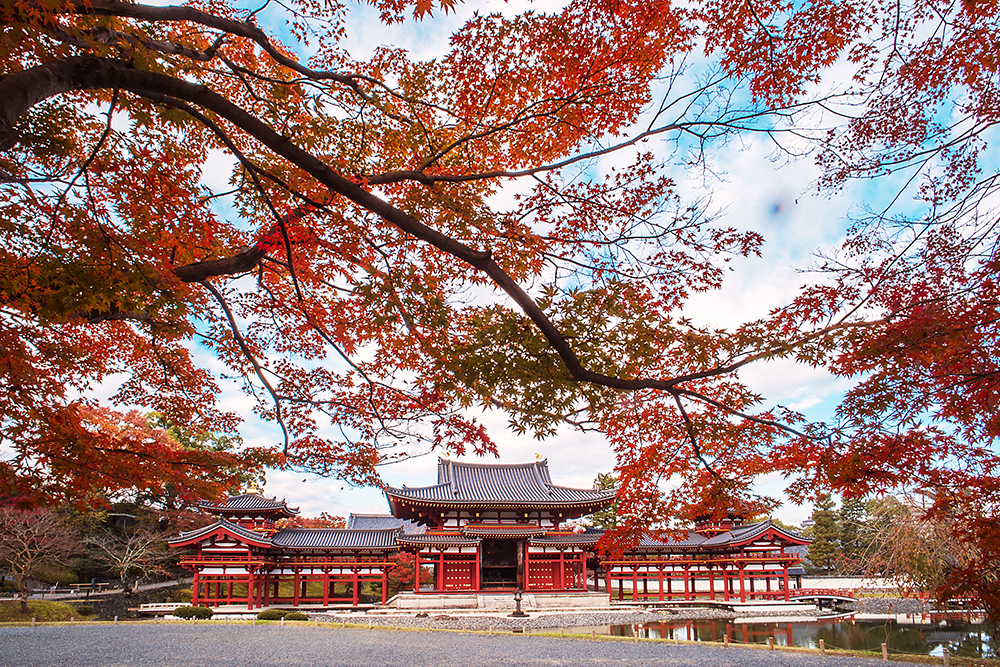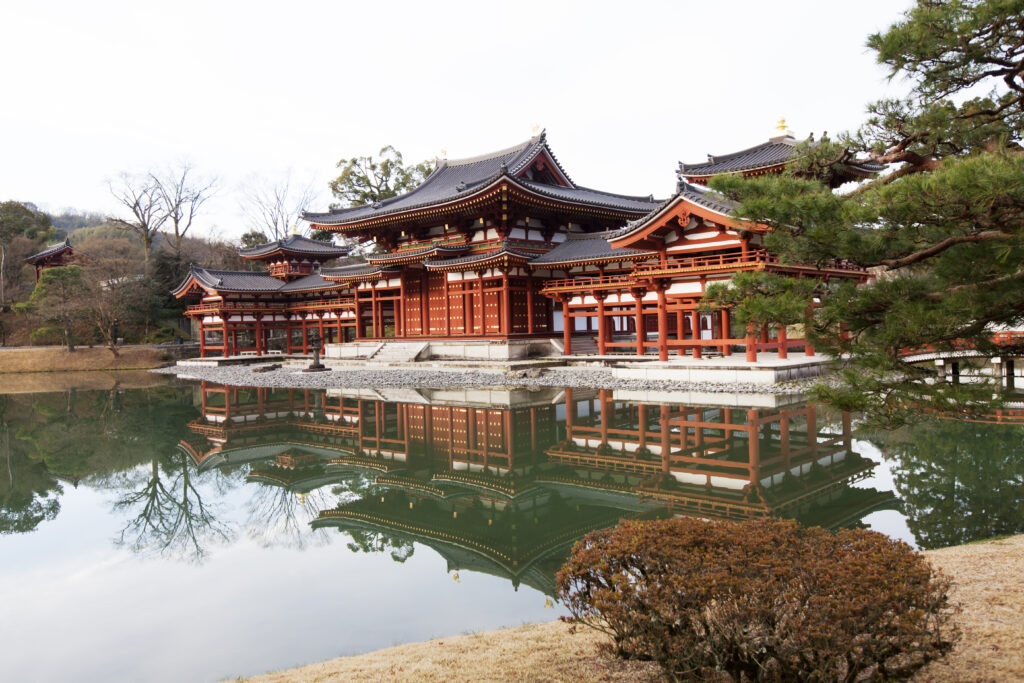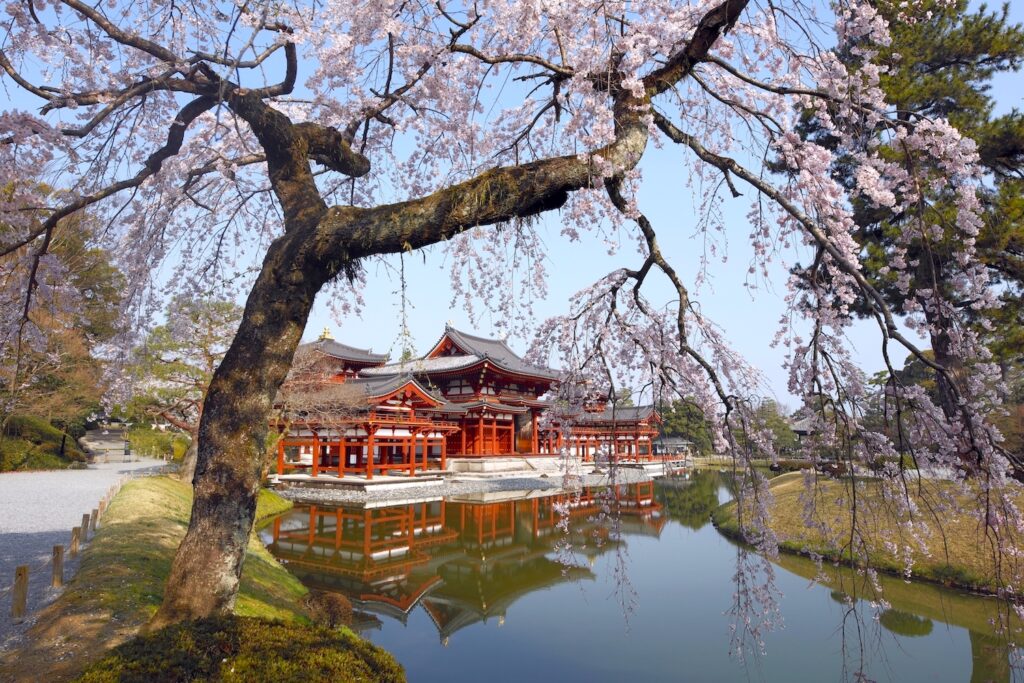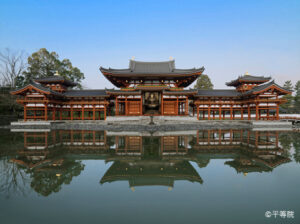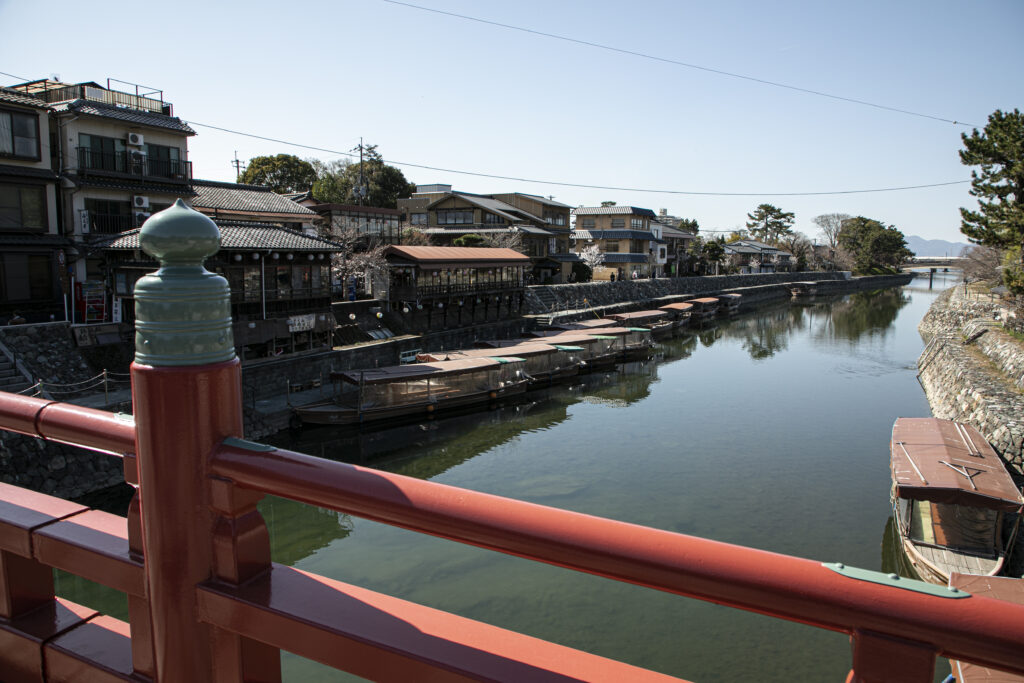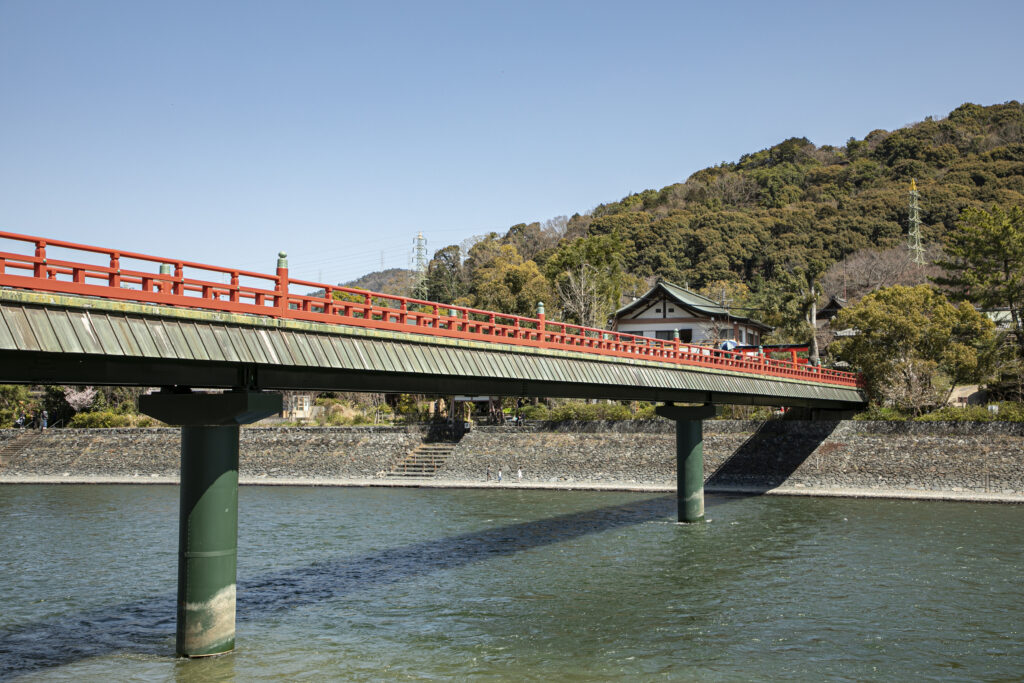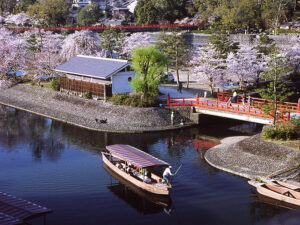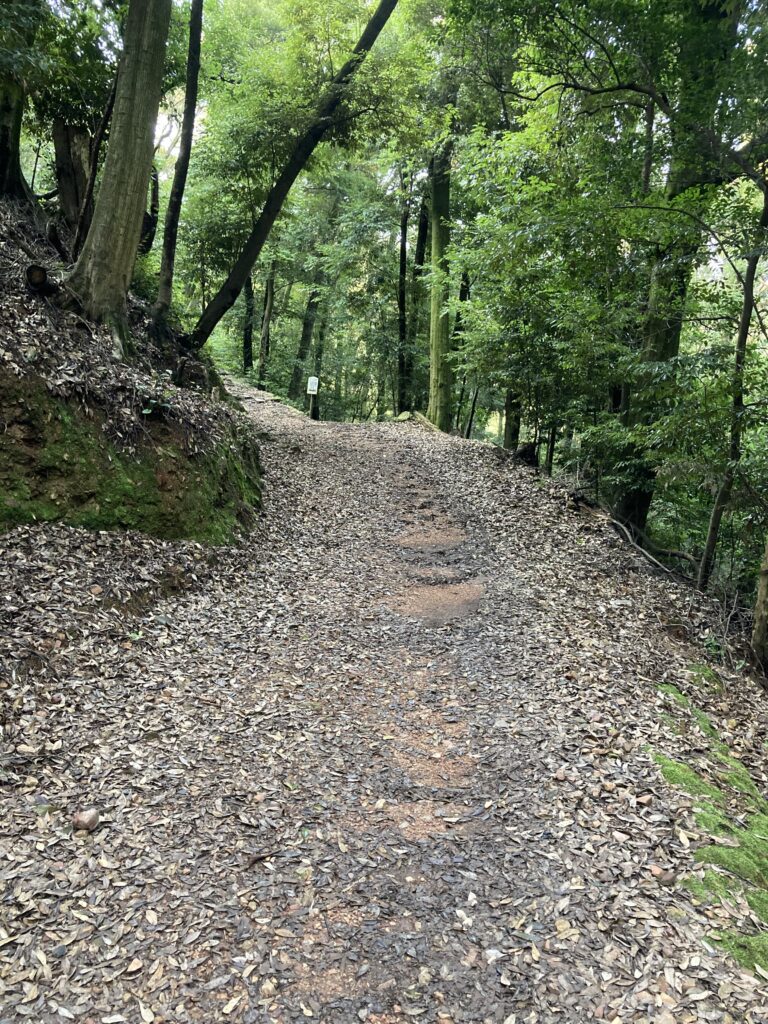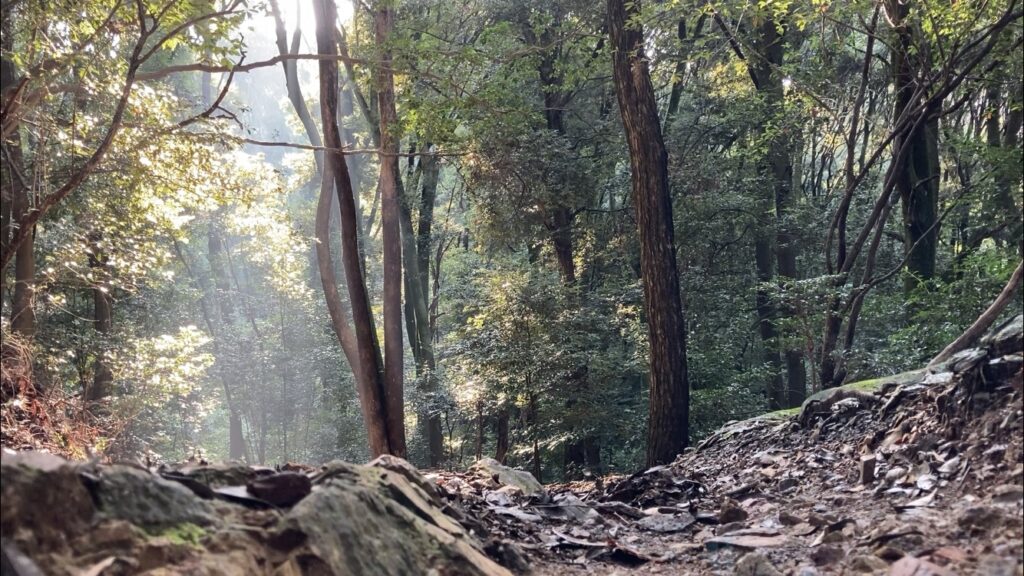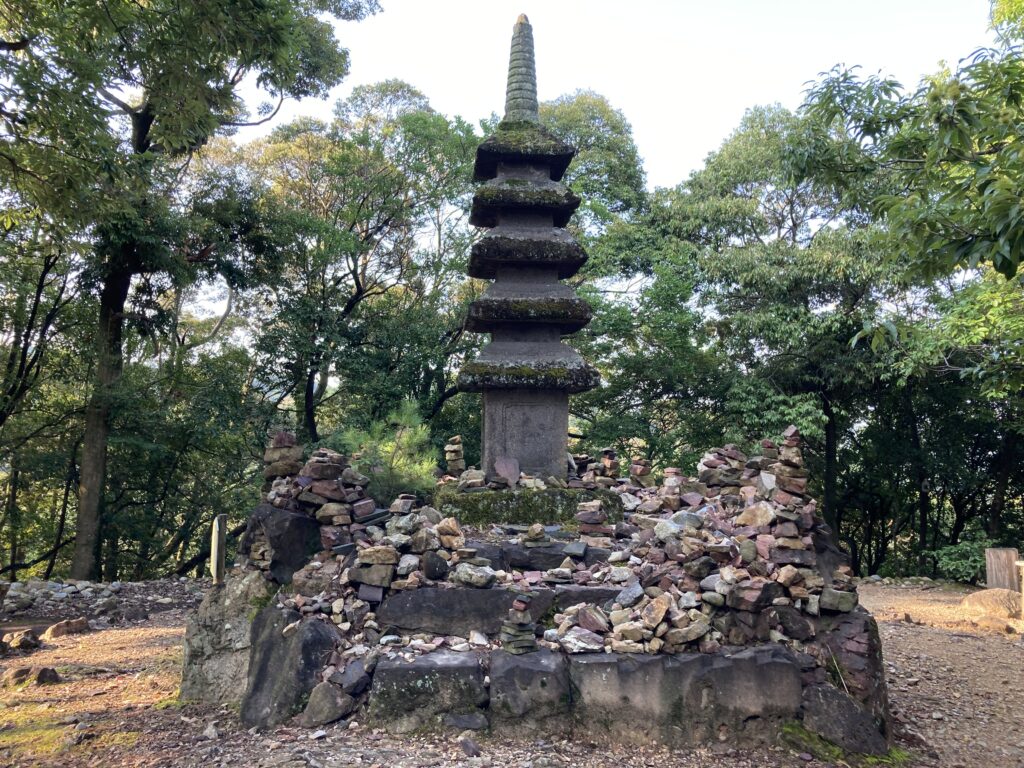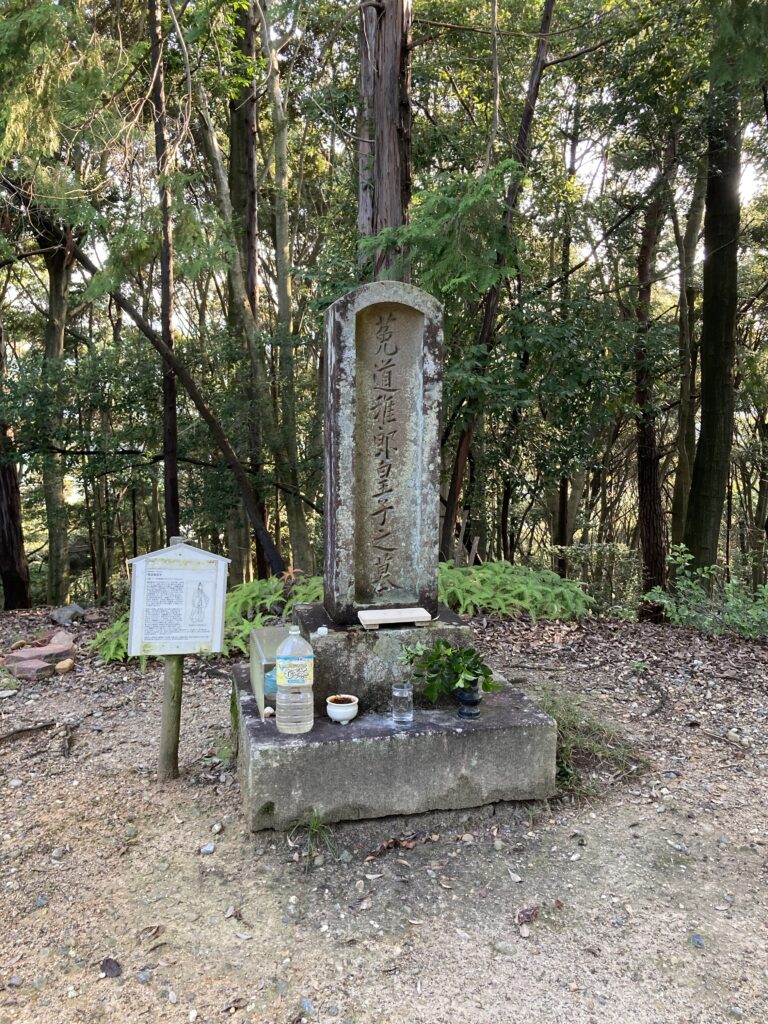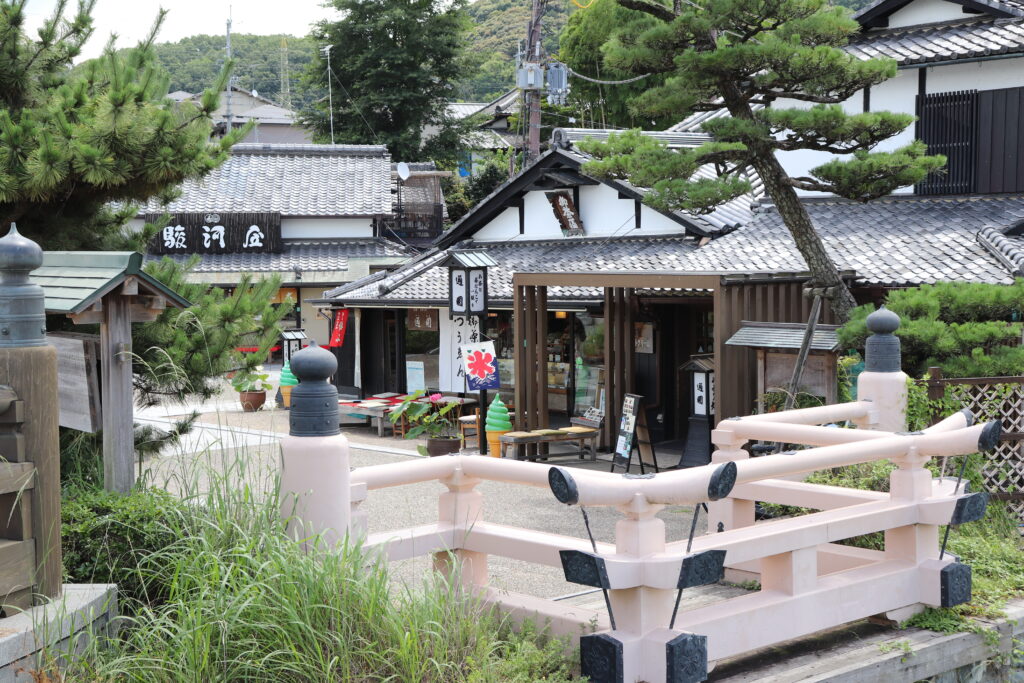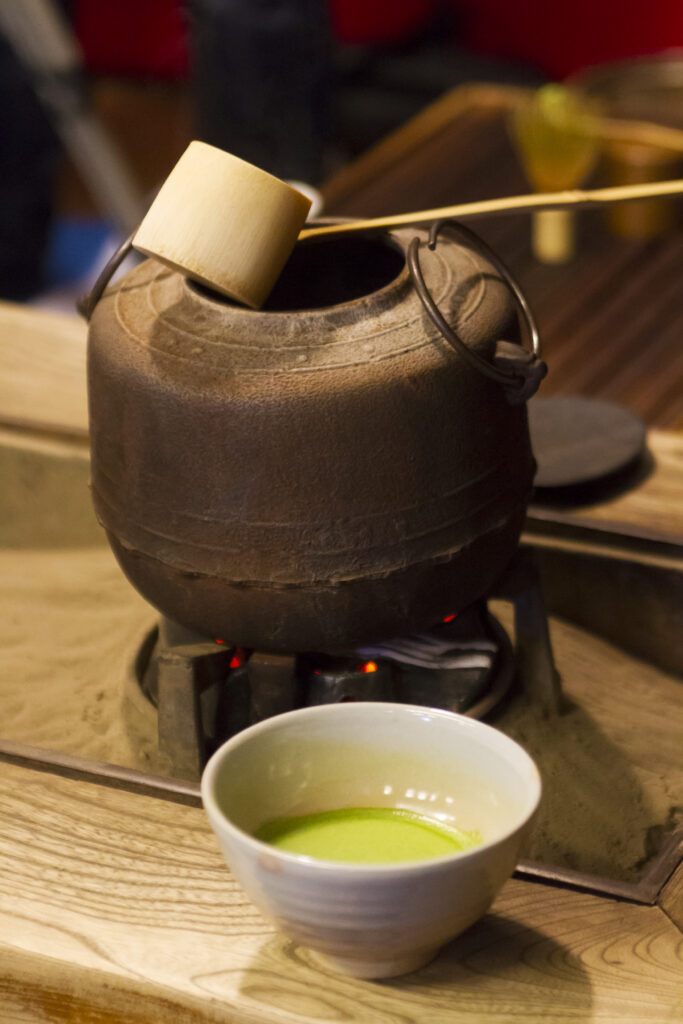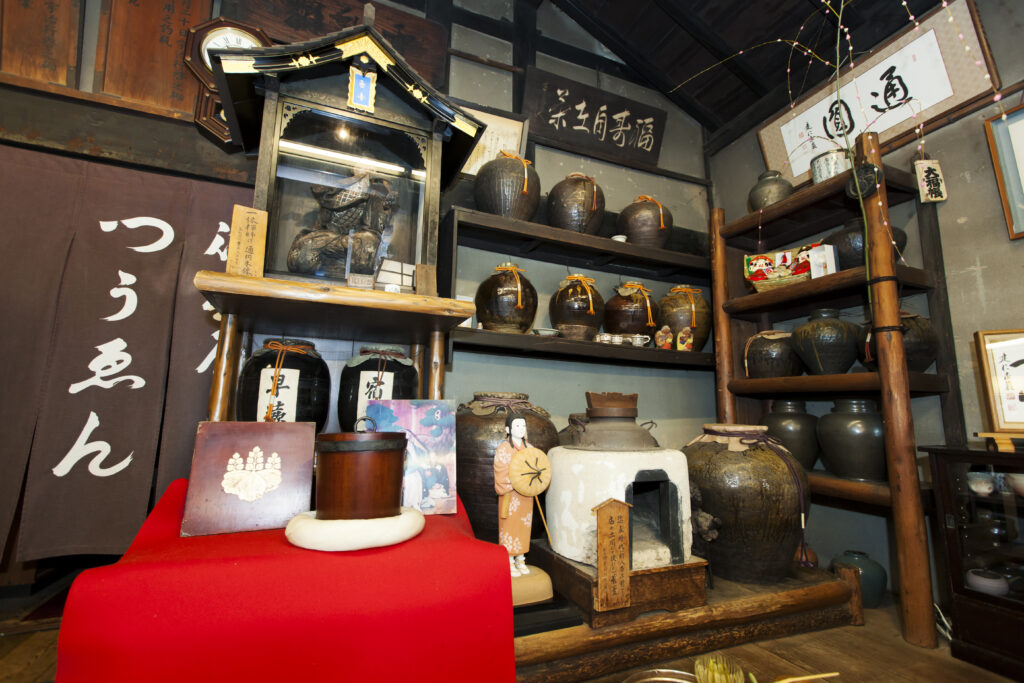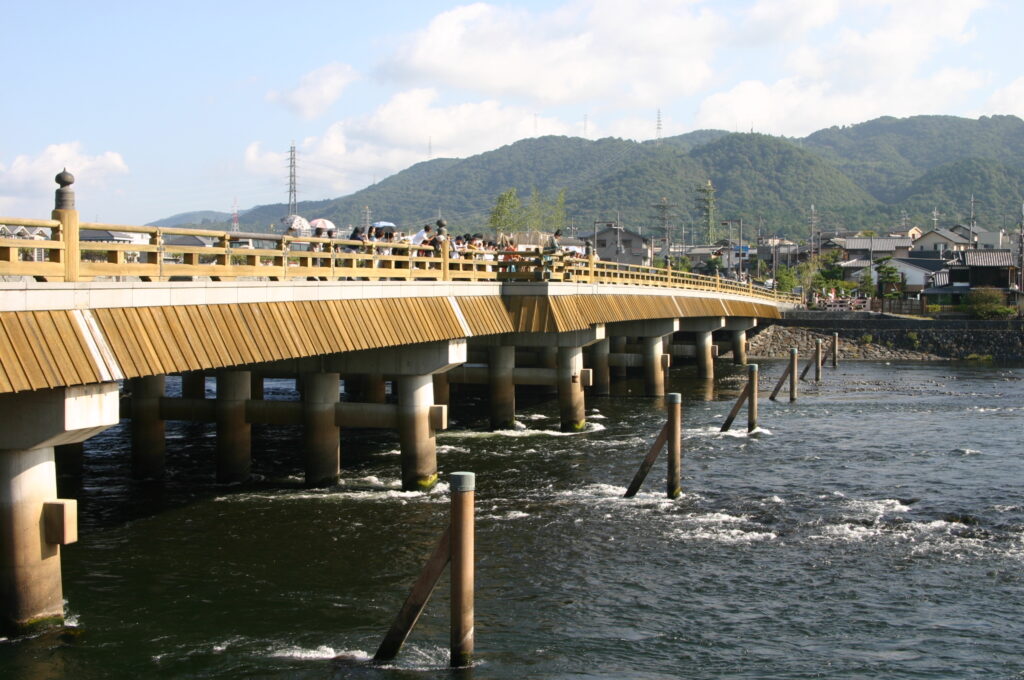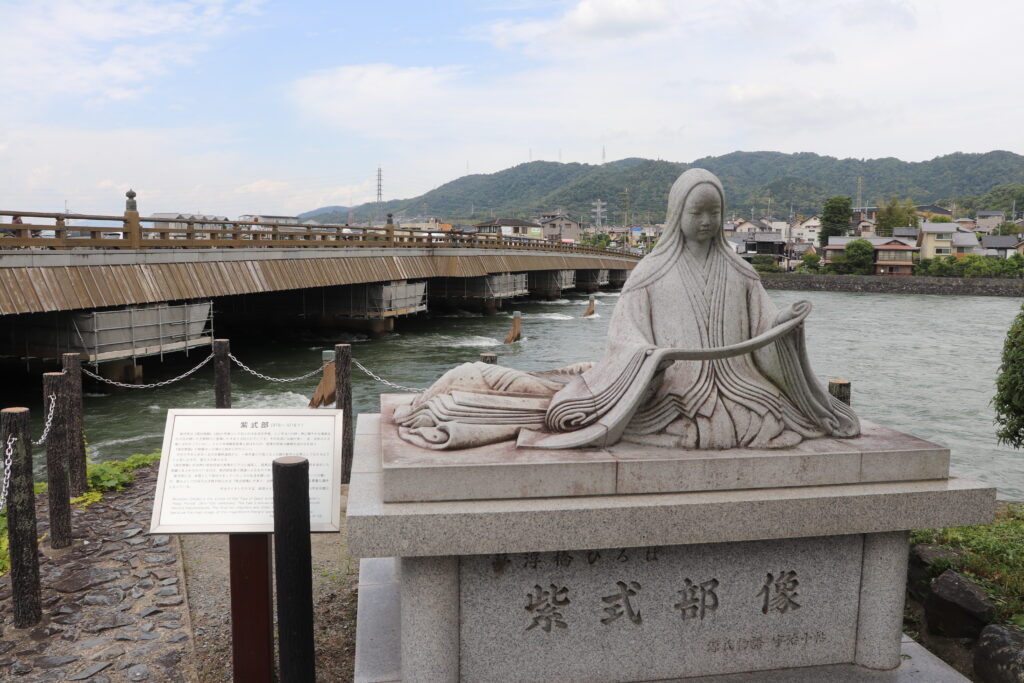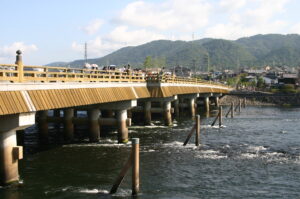From Tsuen Tea House we head over the Uji Bridge back towards JR Uji Station. The current Uji Bridge was constructed in 1996. In fitting with the area it is lined with small tea bushes, and offers amazing views of the scenic nature of Uji in both directions. In the middle of the bridge is a spot where it is said that Toyotomi Hideyoshi, the famous 16th century warlord, drew water for his tea ceremony. Nowadays, water is drawn from this point every October during the annual Uji-cha Festival.
There has been an ‘Uji Bridge’ since the 7th century, and the first was erected in 646. The bridge appears in many pieces of literature including The Tale of Genji, and on the south-west side of the bridge you’ll find a stone statue of the author Murasaki Shikibu.
It is a location that has also been the scene of 12th and 13th century battles. One of those battles, in 1180, was fought between the Minamoto and the Taira imperial houses. On one side was Minamoto Yorimasa, friend of the above-mentioned Tsuen Masahisa, who actually stood on the side of the Minamoto in the battle, vastly outnumbered by the Taira warriors on the other. Whilst crossing the bridge to escape, the Minamoto pulled up parts of the bridge, making it impossible for the chasing Taira to cross. Volleys of arrows were fired across from the riverbank and eventually a river crossing was made on horseback by the larger forces of the Taira. Tsuen Misahisa and Minamoto Yorimasa, who had taken an arrow in the knee during the battle, proceeded to commit ceremonial suicide (seppuku) in the gardens of Byodo-in Temple, knowing that defeat was inevitable as they were vastly outnumbered. Legend has it that Yorimasa’s head was thrown in to the Uji River by one of his own men to avoid it falling into enemy hands.
A second battle at Uji Bridge, in 1184, involved the famed samurai Minamoto no Yoshitsune after he chased his fellow Minamoto, Yoshinaka, who with his forces had kidnapped the Emperor Go-Shirakawa. Yoshitsune and his men caught up with and defeated Yoshinaka at Uji.
The third battle of Uji occurred in 1221 between the Emperor Go-Toba supporters and the Shogunate. Uji was seen as a gateway into Kyoto and the bridge was a key defensive point. The Emperor stood firm for many hours before eventually the Shogun broke through and the defending army was routed.
As you cross the bridge as it stands today, taking in the scenes of boats along the flowing river and the beautiful mountain ranges rising up on either side, it is incredible to think about the turbulent historical events that played out in this very spot in centuries past.
Uji-bashi Bridge
In Hashidera Hojoin temple, there remains one of Japan’s oldest fragments of stone monuments. It states that Doto, a monk from Gango-ji temple in Nara, built the Uji-bashi Bridge in 646.
The bridge i …
